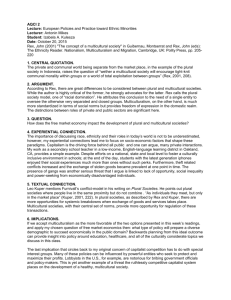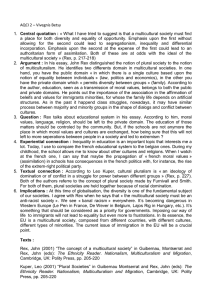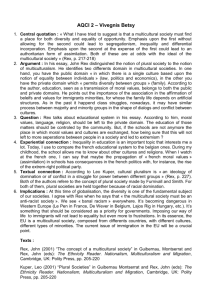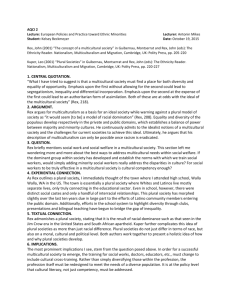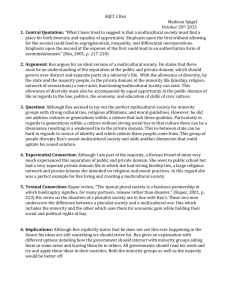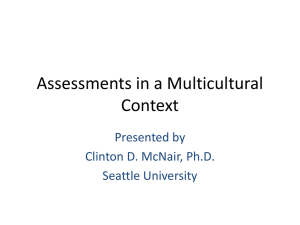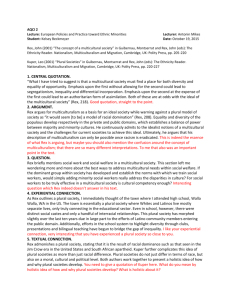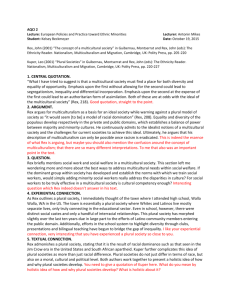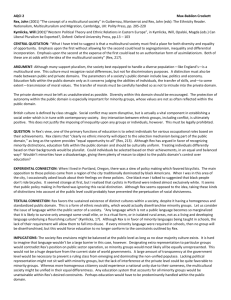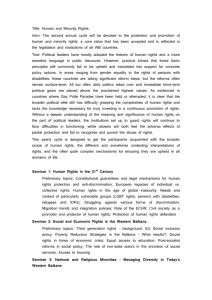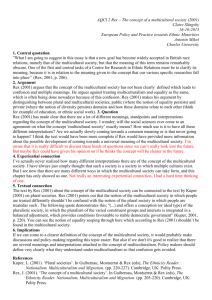AQCII-2 MAX EDITS
advertisement
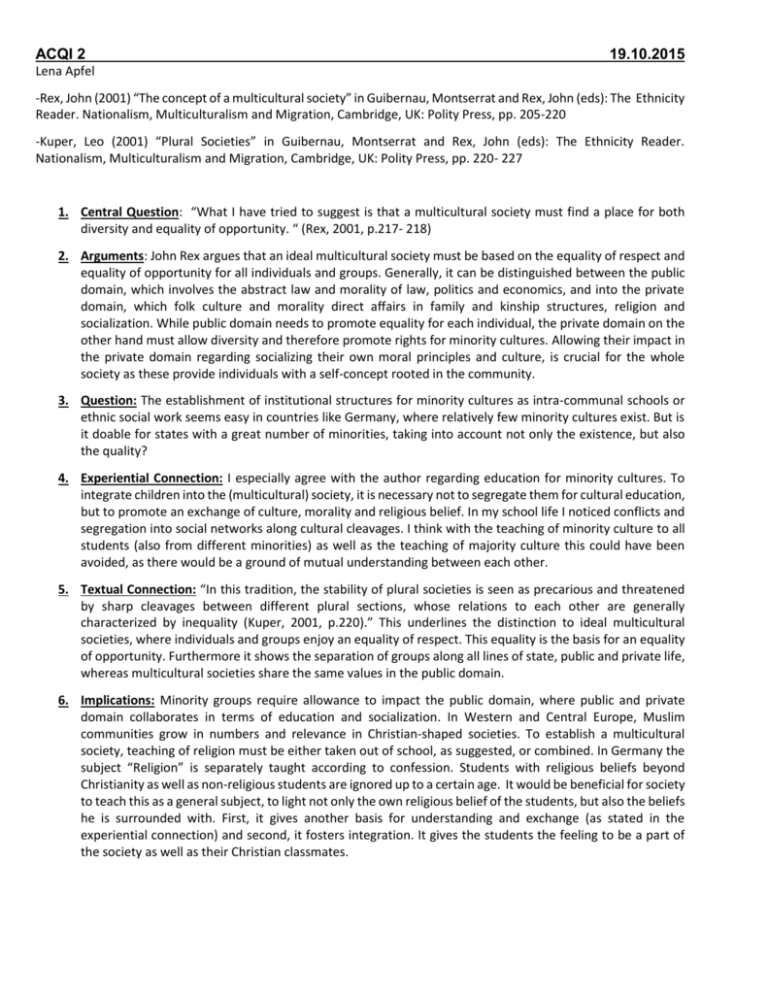
ACQI 2 19.10.2015 Lena Apfel -Rex, John (2001) “The concept of a multicultural society” in Guibernau, Montserrat and Rex, John (eds): The Ethnicity Reader. Nationalism, Multiculturalism and Migration, Cambridge, UK: Polity Press, pp. 205-220 -Kuper, Leo (2001) “Plural Societies” in Guibernau, Montserrat and Rex, John (eds): The Ethnicity Reader. Nationalism, Multiculturalism and Migration, Cambridge, UK: Polity Press, pp. 220- 227 1. Central Question: “What I have tried to suggest is that a multicultural society must find a place for both diversity and equality of opportunity. “ (Rex, 2001, p.217- 218) 2. Arguments: John Rex argues that an ideal multicultural society must be based on the equality of respect and equality of opportunity for all individuals and groups. Generally, it can be distinguished between the public domain, which involves the abstract law and morality of law, politics and economics, and into the private domain, which folk culture and morality direct affairs in family and kinship structures, religion and socialization. While public domain needs to promote equality for each individual, the private domain on the other hand must allow diversity and therefore promote rights for minority cultures. Allowing their impact in the private domain regarding socializing their own moral principles and culture, is crucial for the whole society as these provide individuals with a self-concept rooted in the community. 3. Question: The establishment of institutional structures for minority cultures as intra-communal schools or ethnic social work seems easy in countries like Germany, where relatively few minority cultures exist. But is it doable for states with a great number of minorities, taking into account not only the existence, but also the quality? 4. Experiential Connection: I especially agree with the author regarding education for minority cultures. To integrate children into the (multicultural) society, it is necessary not to segregate them for cultural education, but to promote an exchange of culture, morality and religious belief. In my school life I noticed conflicts and segregation into social networks along cultural cleavages. I think with the teaching of minority culture to all students (also from different minorities) as well as the teaching of majority culture this could have been avoided, as there would be a ground of mutual understanding between each other. 5. Textual Connection: “In this tradition, the stability of plural societies is seen as precarious and threatened by sharp cleavages between different plural sections, whose relations to each other are generally characterized by inequality (Kuper, 2001, p.220).” This underlines the distinction to ideal multicultural societies, where individuals and groups enjoy an equality of respect. This equality is the basis for an equality of opportunity. Furthermore it shows the separation of groups along all lines of state, public and private life, whereas multicultural societies share the same values in the public domain. 6. Implications: Minority groups require allowance to impact the public domain, where public and private domain collaborates in terms of education and socialization. In Western and Central Europe, Muslim communities grow in numbers and relevance in Christian-shaped societies. To establish a multicultural society, teaching of religion must be either taken out of school, as suggested, or combined. In Germany the subject “Religion” is separately taught according to confession. Students with religious beliefs beyond Christianity as well as non-religious students are ignored up to a certain age. It would be beneficial for society to teach this as a general subject, to light not only the own religious belief of the students, but also the beliefs he is surrounded with. First, it gives another basis for understanding and exchange (as stated in the experiential connection) and second, it fosters integration. It gives the students the feeling to be a part of the society as well as their Christian classmates. AQCI ASSESSMENT FORM Student’s name: Lena Apfel Essay title: AQCI 2 Name of assessor: Excel lent 1) Is the chosen quotation central to the author’s argument? Go od Max BabilonCrockett Aver age Po or Not accept able Date: 19.10.15 Comments xx X x 2) Has the main argument been fully understood (including its ‘for’ and ‘against’ sides, if applicable)? xx 3a) Is the question raised important/relevant/interesting? 3b) Has this question not been fully answered in the text? Might need more context Xx x x 4) Is the experiential connection relevant/interesting? 5a) Is the textual connection relevant/interesting? 5b) Has it been cited properly? 5c) Has it been adequately explained how the present text's argument contrasts with, contradicts, confirms, clarifies, or elaborates the other text's argument or point? xx Brief, but acceptable xx Could be expanded xx The practical side is definitely there. More implications could be discussed though. xx 6) Have the implications been well understood, can they have a practical impact for policy making? 7) Expression/Presentation a) Are the style, grammar and general use of English adequate? b) Is the AQCI professionally presented? Essay grade: Further comments: Personal, but not really an individual experience x x x x Hopefully my suggestions clean it up. It’s just about ready.
